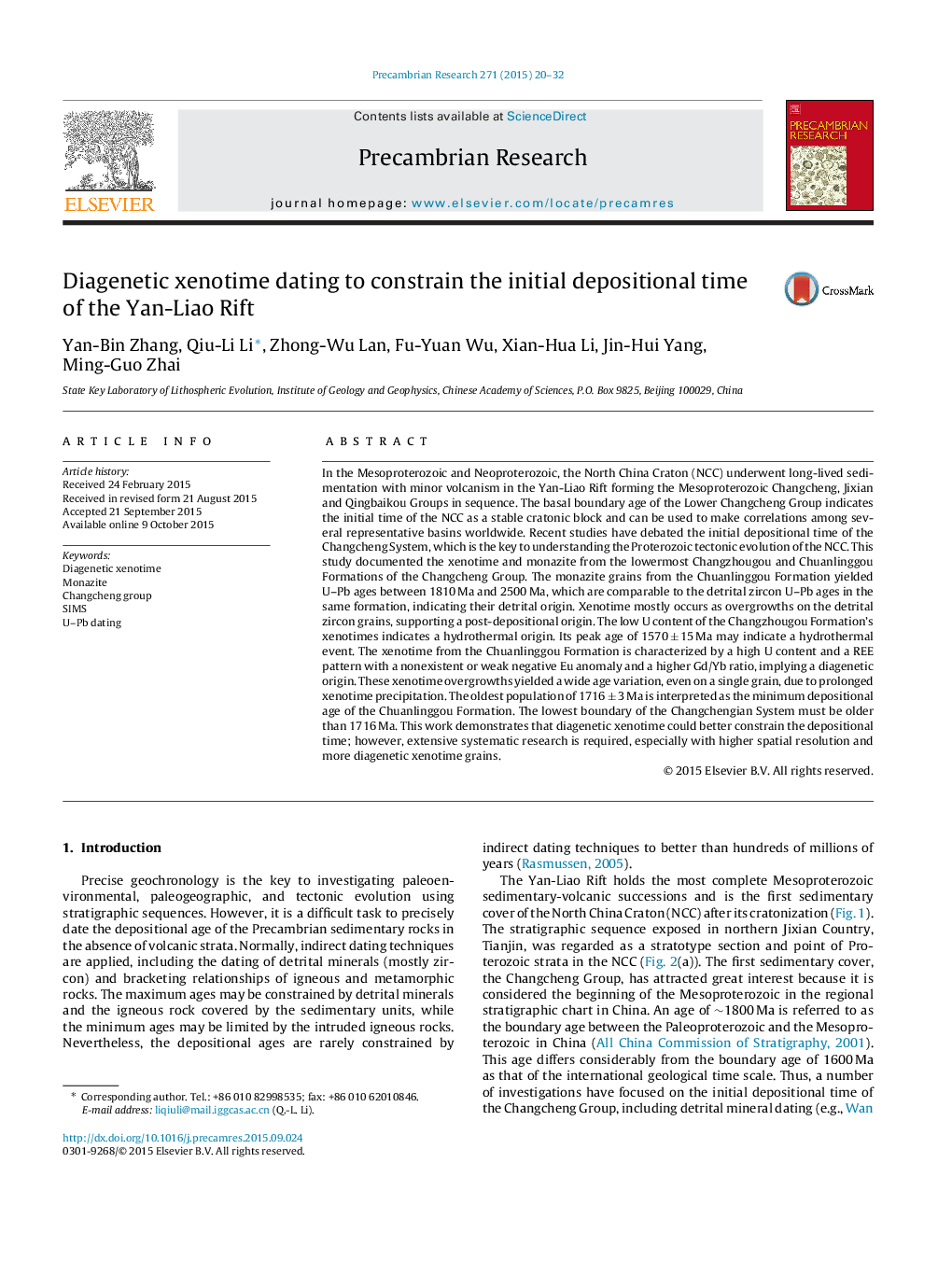| کد مقاله | کد نشریه | سال انتشار | مقاله انگلیسی | نسخه تمام متن |
|---|---|---|---|---|
| 4722475 | 1639604 | 2015 | 13 صفحه PDF | دانلود رایگان |

• Autogenic minerals were tried to constrain the initial depositional time of Changcheng Group.
• SIMS U–Pb and Pb–Pb dating were conducted on monazite and xenotime at <5 μm scale.
• A wide age spectrum on a single xenotime overgrowth indicates a prolonged precipitation.
• The minimum initial depositional time of Changcheng Group is determined at 1716 ± 3 Ma.
In the Mesoproterozoic and Neoproterozoic, the North China Craton (NCC) underwent long-lived sedimentation with minor volcanism in the Yan-Liao Rift forming the Mesoproterozoic Changcheng, Jixian and Qingbaikou Groups in sequence. The basal boundary age of the Lower Changcheng Group indicates the initial time of the NCC as a stable cratonic block and can be used to make correlations among several representative basins worldwide. Recent studies have debated the initial depositional time of the Changcheng System, which is the key to understanding the Proterozoic tectonic evolution of the NCC. This study documented the xenotime and monazite from the lowermost Changzhougou and Chuanlinggou Formations of the Changcheng Group. The monazite grains from the Chuanlinggou Formation yielded U–Pb ages between 1810 Ma and 2500 Ma, which are comparable to the detrital zircon U–Pb ages in the same formation, indicating their detrital origin. Xenotime mostly occurs as overgrowths on the detrital zircon grains, supporting a post-depositional origin. The low U content of the Changzhougou Formation's xenotimes indicates a hydrothermal origin. Its peak age of 1570 ± 15 Ma may indicate a hydrothermal event. The xenotime from the Chuanlinggou Formation is characterized by a high U content and a REE pattern with a nonexistent or weak negative Eu anomaly and a higher Gd/Yb ratio, implying a diagenetic origin. These xenotime overgrowths yielded a wide age variation, even on a single grain, due to prolonged xenotime precipitation. The oldest population of 1716 ± 3 Ma is interpreted as the minimum depositional age of the Chuanlinggou Formation. The lowest boundary of the Changchengian System must be older than 1716 Ma. This work demonstrates that diagenetic xenotime could better constrain the depositional time; however, extensive systematic research is required, especially with higher spatial resolution and more diagenetic xenotime grains.
Journal: Precambrian Research - Volume 271, December 2015, Pages 20–32